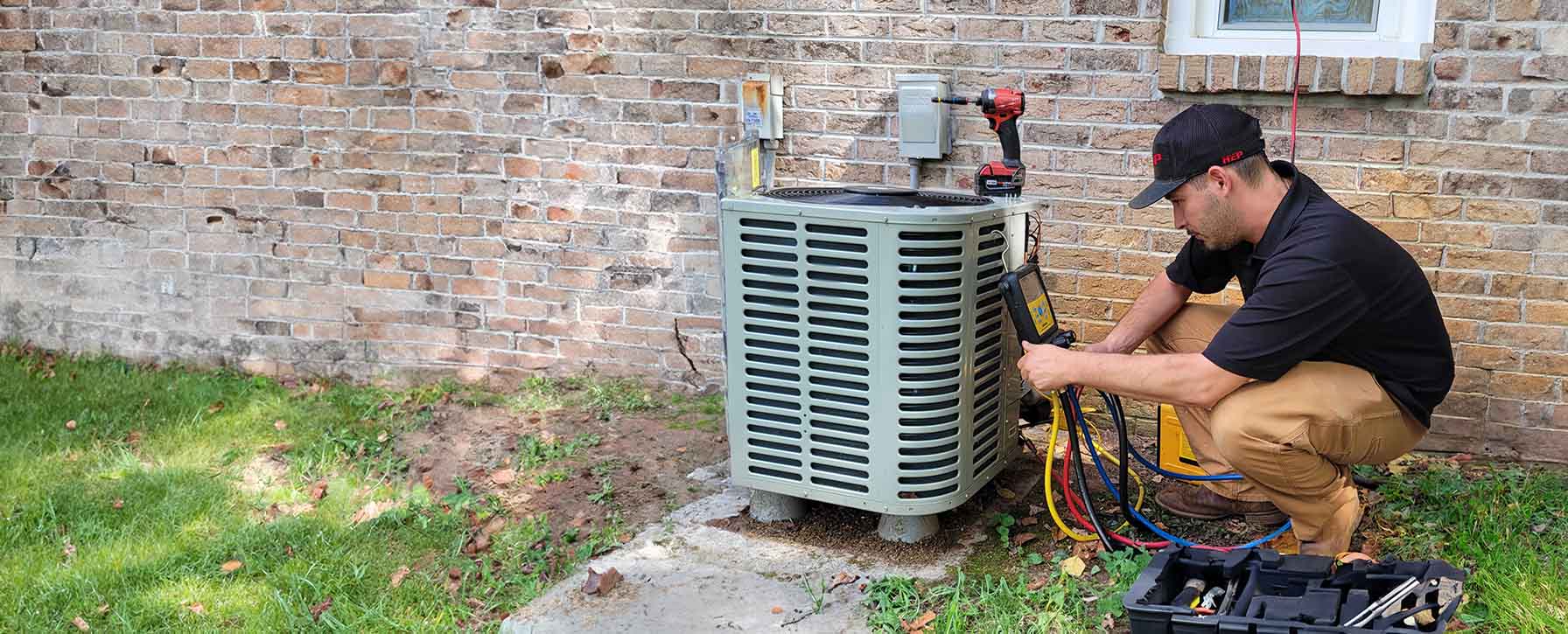

HVAC System
Your trusted partner for professional home services. Quality workmanship, guaranteed satisfaction.




- HEP
- HVAC System
HVAC System | Heating and Air Conditioning | Winfield
When Midwest winters bite or summer humidity settles over Winfield, HEP is the team neighbors trust to keep every indoor moment perfectly comfortable. Our certified technicians design, install, and maintain high-efficiency heating and air conditioning systems that respond instantly to the city’s quick weather swings, delivering steady warmth, refreshing cool, and lower utility bills—all backed by prompt, friendly service.
From energy-saving tune-ups to emergency repairs at 2 a.m., we bring decades of know-how, upfront pricing, and a satisfaction guarantee to every home and business. Let HEP’s local experts handle the details while you enjoy breathable air, whisper-quiet operation, and year-round peace of mind in Winfield.
FAQs
How often should I schedule maintenance for my HVAC system in Winfield’s climate?
Because Winfield experiences hot, humid summers and chilly winters, both the cooling and heating sides of your system work hard. We recommend two professional tune-ups per year—an air-conditioning check in the spring and a furnace or heat-pump check in the fall. Regular maintenance includes cleaning coils, checking refrigerant charge, tightening electrical connections, lubricating motors, and verifying thermostat calibration. Biannual service keeps the equipment efficient, extends its life, maintains manufacturer warranty coverage, and helps prevent mid-season breakdowns when you need comfort the most.
What size air conditioner or furnace do I need for my Winfield home?
Proper sizing depends on much more than square footage. An HVAC professional will perform a Manual J load calculation that factors in local design temperatures for Winfield, insulation levels, window types, sun exposure, ceiling height, occupancy, and even air-leakage rates. Oversized equipment short-cycles, wastes energy, and provides uneven comfort, while undersized units run constantly and still can’t reach setpoint. After the load calculation, your contractor will recommend the correct tonnage (cooling) and BTU output (heating) so you get balanced comfort, lower utility bills, and longer equipment life.
How can I improve my HVAC system’s energy efficiency and lower utility bills?
1) Change or wash air filters every 1–3 months so airflow stays unrestricted. 2) Seal duct leaks with mastic or metal tape; leaky ducts can waste up to 30% of conditioned air. 3) Install a programmable or smart thermostat and set back temperatures when you’re asleep or away. 4) Keep outdoor condenser coils clear of debris and indoor vents unblocked. 5) Add attic insulation and weather-stripping to reduce heating and cooling load. 6) Consider high-efficiency equipment with ENERGY STAR® ratings and variable-speed motors. In Winfield, state or utility rebates may offset upfront costs, and you can often recover the investment through energy savings in 3–5 years.
What are the benefits of upgrading to a high-efficiency heat pump or dual-fuel system?
Modern heat pumps can heat efficiently down to about 5 °F, which covers most of Winfield’s winter days. They provide both heating and cooling, use electricity rather than fossil fuel, and can achieve SEER2 ratings of 16–20 and HSPF2 ratings above 8. A dual-fuel (hybrid) system pairs a heat pump with a gas furnace: the heat pump handles moderate temperatures, and the furnace kicks in only during extreme cold. This combination maximizes efficiency year-round, reduces carbon footprint, and offers fuel-price flexibility. Many homeowners cut annual energy costs by 20–40% after switching.
How long does a typical HVAC replacement or new installation take, and what should I expect?
For a straightforward replacement of an existing furnace and air conditioner, most projects in Winfield take one full day. Complex jobs—such as adding new ductwork, zoning dampers, or relocating equipment—can extend to 2–3 days. Expect the crew to: • Protect flooring and furniture with drop cloths. • Recover and properly dispose of old refrigerant. • Remove old equipment and check ductwork for leaks. • Set new indoor and outdoor units, run refrigerant lines, and install the condensate drain. • Pull a city permit and schedule an inspection if required. • Start up the system, verify refrigerant charge, test safety controls, and show you how to operate the thermostat. A quality contractor will leave the workspace clean and provide copies of manuals, warranty papers, and a written invoice.
Do I have to replace my air conditioner and furnace at the same time?
Not always, but there are advantages. If one component is more than 12–15 years old or has a major mechanical failure, replacing both ensures the equipment is matched for efficiency and uses the same refrigerant. A matched system often qualifies for better manufacturer warranties and achieves the advertised SEER/HSPF or AFUE ratings. However, if the unaffected unit is relatively new (less than 7–8 years) and in good condition, you can typically replace just the failed component. Your HVAC professional can evaluate remaining lifespan, refrigerant compatibility (older R-22 systems are being phased out), and potential energy savings to help you decide which option makes financial sense for your Winfield home.